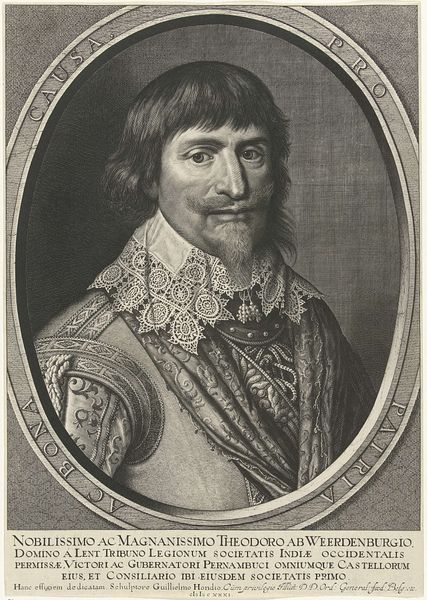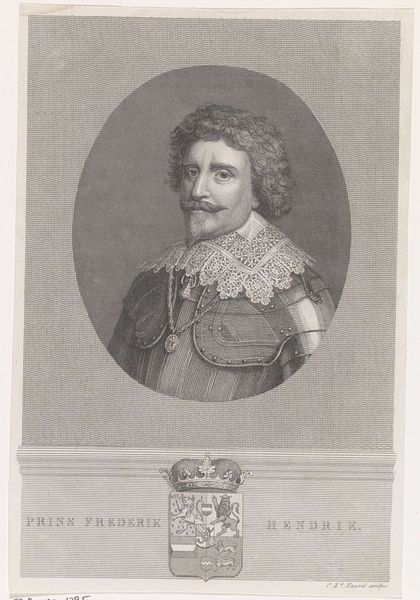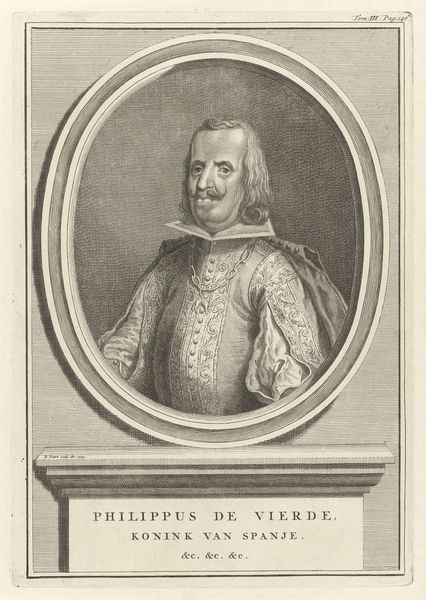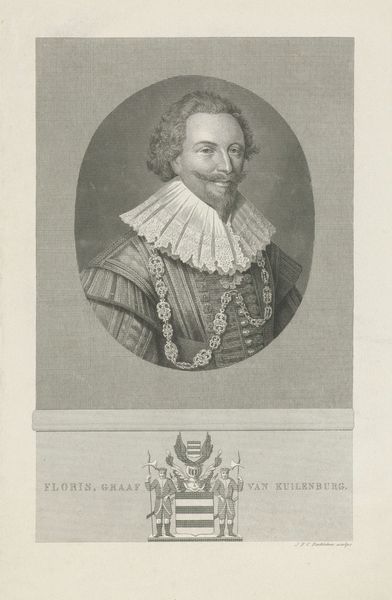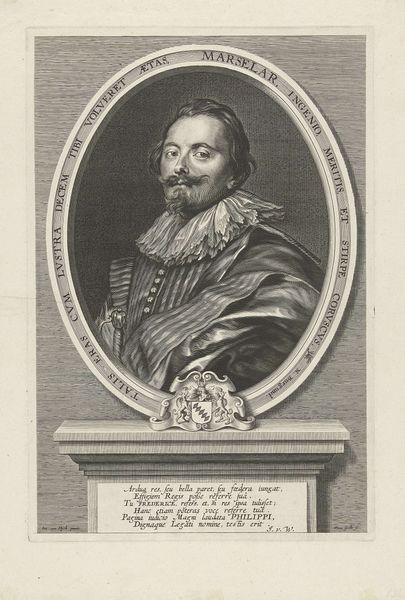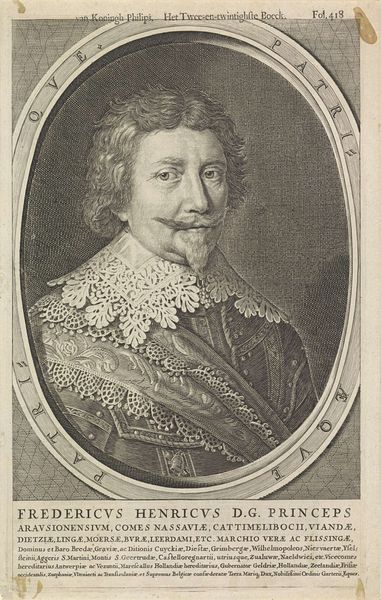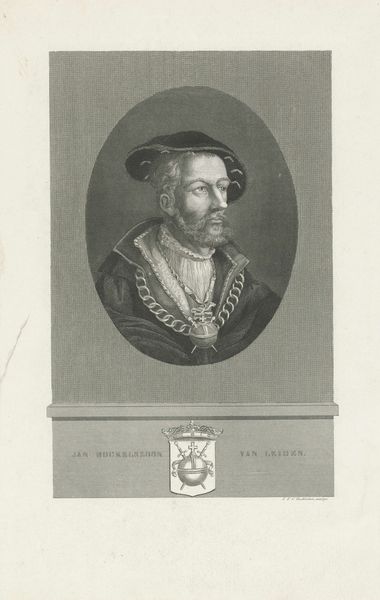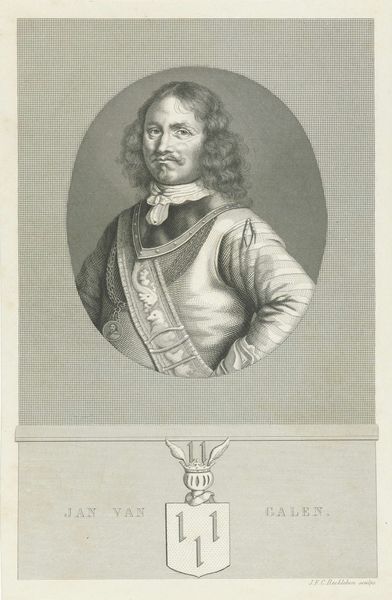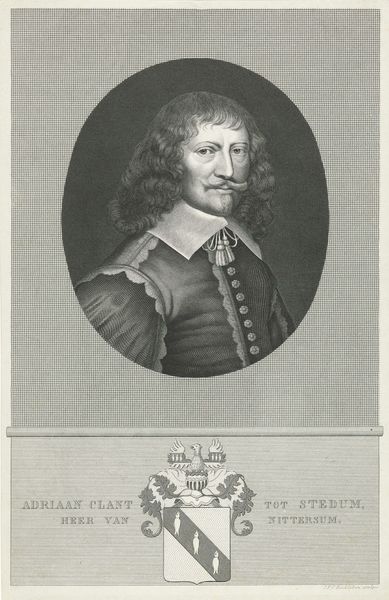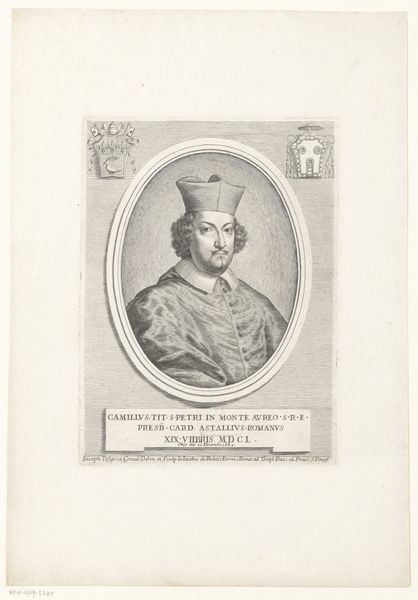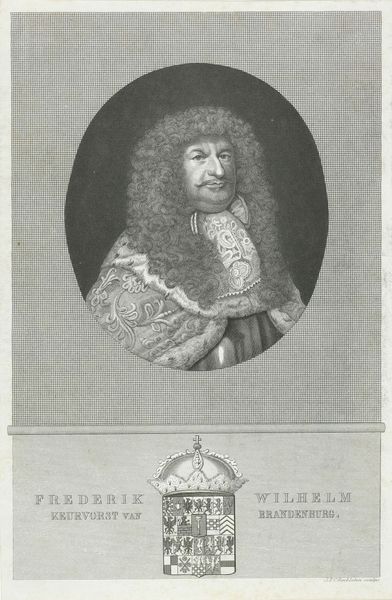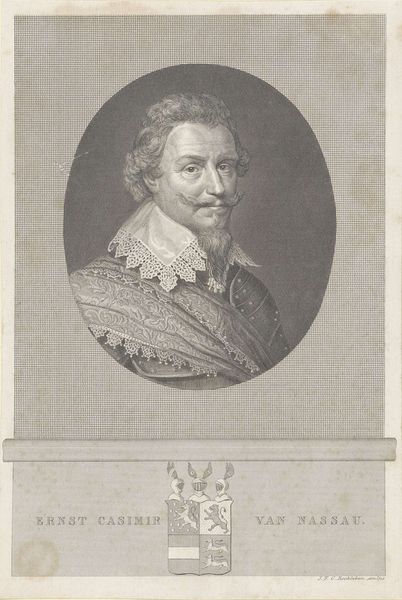
Dimensions: height 248 mm, width 172 mm
Copyright: Rijks Museum: Open Domain
Curator: Right, let’s delve into this rather imposing image. This is a print from 1863 titled "Portret van Theodor van Weerdenburg," currently residing here at the Rijksmuseum. The artist behind it is Jan Frederik Christiaan Reckleben. Editor: It's striking, isn't it? Immediately I get a sense of contained power. The tight oval framing seems to focus all the attention on the face, like he’s a planet in his own orbit, ringed with lace and...dare I say, anxiety? Curator: Anxiety? That’s an interesting read. Tell me more. Editor: Well, consider the lace collar—so elaborate, so protective. And that little goatee and moustache combination… almost defensively precise. Beneath the aristocratic surface, could there be a vulnerable soul? The engraver has captured minute detail but perhaps has unconsciously signaled psychological nuances using such attributes as emblems of protection or apprehension. Curator: Reckleben certainly was meticulous. As an engraving, the line work is astonishingly delicate. Look how he builds up the tones, creating form out of essentially, well, pure geometry. Even that decorative element, a heraldic shield beneath the portrait—it’s all lines and carefully considered spaces. This visual language reinforces the importance and position of Weerdenburg. Editor: Exactly! Heraldry, portraiture—these aren't merely about likeness. The geometric foundation adds this rigid symbolic vocabulary: order, family, and lineage distilled into repeatable forms, communicating status without words. That oval portrait format itself evokes coins, medals, and historical cameos--visual markers of importance, power or enduring significance through remembrance. Curator: So you think the formal aspects underpin a subtle statement of dominance? A sort of encoded visual declaration? Editor: Subtly is key, I believe. This isn’t outright boasting. It’s about reminding himself—and those looking at the work—of his role, place, and heritage through these artistic choices. These men needed reminding constantly as much as, say, they enjoy having paintings remind the world as a type of enduring personal statement, whether or not consciously acknowledged, they can't exactly claim plausible deniability on these choices, can they? Curator: Hmm, valid. It brings a whole other dimension to what might seem, at first glance, like just another formal portrait. Editor: Ultimately the portrait resonates through time, reminding us about art's ability to express inner narratives that become a keyhole of social histories when seen through attentive contemplation. Curator: A visual encoding to discover more and more of over a painting's timeline. Beautifully put.
Comments
No comments
Be the first to comment and join the conversation on the ultimate creative platform.
